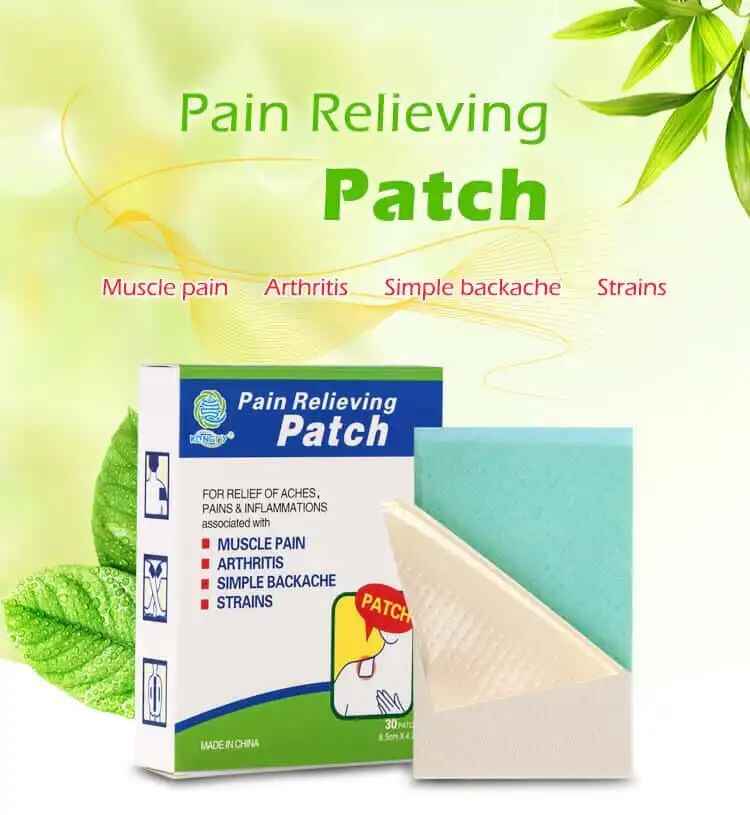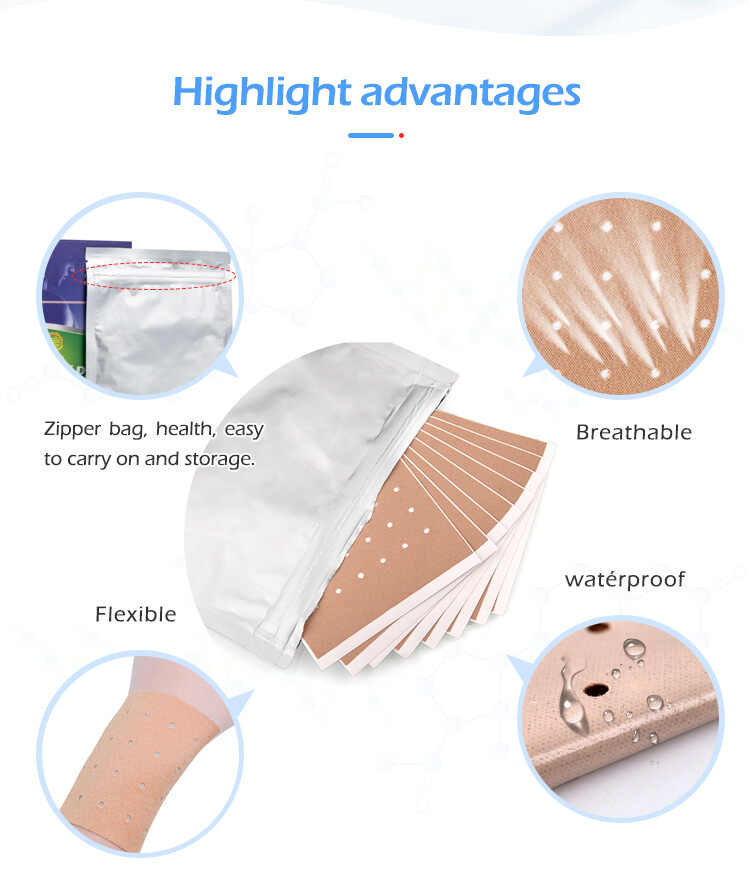Are There Any Regulatory Requirements for Manufacturing Heat Therapy Patches?
When considering the production of Heat Therapy Patches, whether through a Heat Therapy Patch Manufacturer, Heat Therapy Patch OEM, or Heat Therapy Patch Supplier, it’s essential to be aware of the regulatory landscape that governs the industry. Regulatory requirements ensure the safety, efficacy, and quality of the products, and compliance is crucial for manufacturers aiming to distribute their patches in various markets worldwide.
Heat therapy products are often categorized as medical devices or consumer wellness products, and the specific regulations can vary based on the region and the intended use of the product. Understanding the necessary regulations is not only important for legal compliance but also for maintaining customer trust and ensuring the effectiveness of the product.
In this article, we’ll explore the key regulatory requirements involved in manufacturing Custom Heat Therapy Patches and Private Label Heat Therapy Patches, including the FDA regulations in the U.S., CE marking in Europe, and other international guidelines.

1. Regulatory Framework for Heat Therapy Patches
Heat therapy products, including Custom Heat Therapy Patches, can fall into different categories depending on their intended use. The primary concern in regulating these products is ensuring that they do not pose a risk to the user’s health while providing the intended therapeutic benefit. Regulatory bodies typically focus on aspects like safety, quality, performance, and labeling.
a) Classifications of Heat Therapy Patches
Medical Devices vs. Consumer Products: Depending on the claims made about the product, Heat Therapy Patches can either be classified as medical devices or consumer wellness products. If the patch is marketed as a therapeutic product to treat or alleviate a specific medical condition (e.g., muscle pain, arthritis), it may be classified as a medical device, which is subject to stricter regulatory controls.
Consumer Wellness Products: If the Heat Therapy Patch is marketed for general wellness, without medical claims, it may be considered a non-regulated consumer product. However, even in this case, safety and quality standards must be adhered to.
2. Regulatory Requirements in the United States
In the U.S., the Food and Drug Administration (FDA) is the primary regulatory body that oversees the safety and effectiveness of heat therapy products. Heat Therapy Patch Manufacturers must comply with FDA regulations to ensure that the products are safe for consumer use.
a) FDA Classification for Heat Therapy Patches
Heat therapy patches that make medical claims (such as pain relief) are classified as medical devices by the FDA. These devices fall under the 21 CFR Part 820 regulations, which apply to the manufacturing and testing of medical devices. For Heat Therapy Patch OEMs or Heat Therapy Patch Suppliers in the U.S., the following regulatory processes apply:
Premarket Notification (510(k)): If a heat therapy patch is intended for medical use, the manufacturer must submit a 510(k) Premarket Notification to the FDA. This process involves demonstrating that the device is substantially equivalent to an already legally marketed product.
Good Manufacturing Practices (GMP): Manufacturers must adhere to Good Manufacturing Practices (GMP) to ensure product consistency, safety, and efficacy. This includes conducting regular quality checks, maintaining clean production environments, and following proper labeling and packaging procedures.
Labeling Requirements: The FDA has specific labeling requirements for medical devices, which include clear instructions for use, warnings, and contraindications. For Private Label Heat Therapy Patches, it’s essential to ensure that the labels meet FDA standards and include all necessary information about the intended use and safety precautions.
b) Non-Medical Heat Therapy Products
If the Custom Heat Therapy Patch is not intended to make medical claims and is instead marketed as a wellness product (for general warmth and comfort), it may not need to undergo the same level of regulatory scrutiny. However, manufacturers still need to ensure that their products are safe for consumers and free from harmful substances.
3. Regulatory Requirements in Europe
In Europe, Heat Therapy Patches that are intended for medical use are regulated under the Medical Device Regulation (MDR), which came into force in May 2021. The MDR governs the safety and performance of medical devices marketed within the EU, including Heat Therapy Patches.
a) CE Marking for Medical Heat Therapy Patches
To market a Heat Therapy Patch as a medical device in Europe, manufacturers must obtain a CE mark. This mark indicates that the product conforms to the relevant EU regulations, including safety, health, and environmental protection standards. The CE marking process includes:
Conformity Assessment: The manufacturer must conduct a risk assessment to ensure that the product is safe for its intended use. If the product is a Class I medical device, the manufacturer can self-certify the CE marking. However, higher-risk devices may require certification by a Notified Body.
Clinical Evaluation: For medical heat therapy products, manufacturers must conduct clinical evaluations to demonstrate the safety and effectiveness of the product. This process may involve clinical trials or the use of clinical data from similar products.
Post-Market Surveillance: After obtaining the CE mark, manufacturers are required to monitor the product’s performance in the market and report any adverse events to the relevant authorities. This is a key part of ensuring ongoing product safety.
b) Non-Medical Products in Europe
If a Heat Therapy Patch is classified as a non-medical product, it is subject to less stringent regulation. However, it must still comply with General Product Safety Directive 2001/95/EC, which requires that products placed on the market do not pose a risk to consumer health or safety.
4. International Regulatory Considerations
For Heat Therapy Patch Suppliers who wish to market their products internationally, it's important to be aware of the various regulations in different countries. Here are a few key considerations:
Canada: In Canada, heat therapy patches intended for medical use are regulated by Health Canada as Class II medical devices. Manufacturers must obtain a Medical Device License and follow Good Manufacturing Practices.
Australia: The Therapeutic Goods Administration (TGA) regulates medical devices in Australia, including Heat Therapy Patches. Similar to the FDA, TGA requires manufacturers to comply with manufacturing standards and submit premarket approvals.
Asia: In countries like China and Japan, Heat Therapy Patches are subject to local regulations. For example, in China, the China Food and Drug Administration (CFDA) regulates medical devices, including heat therapy products, and requires product registration and clinical evaluations.
5. Best Practices for Manufacturers and OEMs
To ensure compliance with regulatory requirements and produce safe, high-quality Heat Therapy Patches, manufacturers and Heat Therapy Patch OEMs should follow these best practices:
Conduct Risk Assessments: Regularly evaluate potential risks associated with the product’s use and manufacturing process.
Maintain Detailed Documentation: Keep thorough records of product design, testing, and manufacturing processes to support regulatory submissions.
Implement Quality Control: Establish strong quality control measures to monitor product consistency and safety.
Stay Updated with Regulations: Regulatory requirements can change, so it’s essential to stay informed about updates to FDA, CE, and other relevant regulations.
6. Frequently Asked Questions (FAQs)
Are Heat Therapy Patches regulated as medical devices?
Yes, if the patches are marketed for therapeutic purposes, such as pain relief, they are typically regulated as medical devices in many regions, including the U.S. (FDA) and Europe (CE marking).
Do I need FDA approval to sell a Heat Therapy Patch in the U.S.?
If the patch makes medical claims, you may need to submit a 510(k) notification to the FDA for approval. If it’s a non-medical product, fewer regulatory requirements apply.
What is CE marking, and is it required for Heat Therapy Patches in Europe?
CE marking indicates that a product complies with European safety and health standards. If the patch is a medical device, it must have a CE mark to be sold in the EU.
Are there regulations for non-medical Heat Therapy Patches?
Yes, even non-medical Heat Therapy Patches must meet general safety standards to ensure they do not pose a risk to consumers.
What should I do if I want to manufacture and sell Heat Therapy Patches in multiple countries?
You must research and comply with the specific regulations in each country, which may include obtaining certifications like FDA approval, CE marking, or other local regulatory approvals.
Conclusion
Manufacturing Heat Therapy Patches requires compliance with a variety of regulatory requirements depending on the intended use of the product and the market in which it will be sold. Whether working with a Heat Therapy Patch Manufacturer, OEM, or Supplier, understanding and adhering to regulations like the FDA’s medical device rules, CE marking in Europe, and international standards is crucial. By ensuring regulatory compliance, manufacturers can create safe, effective products that consumers can trust, thus establishing a strong reputation in the market.






